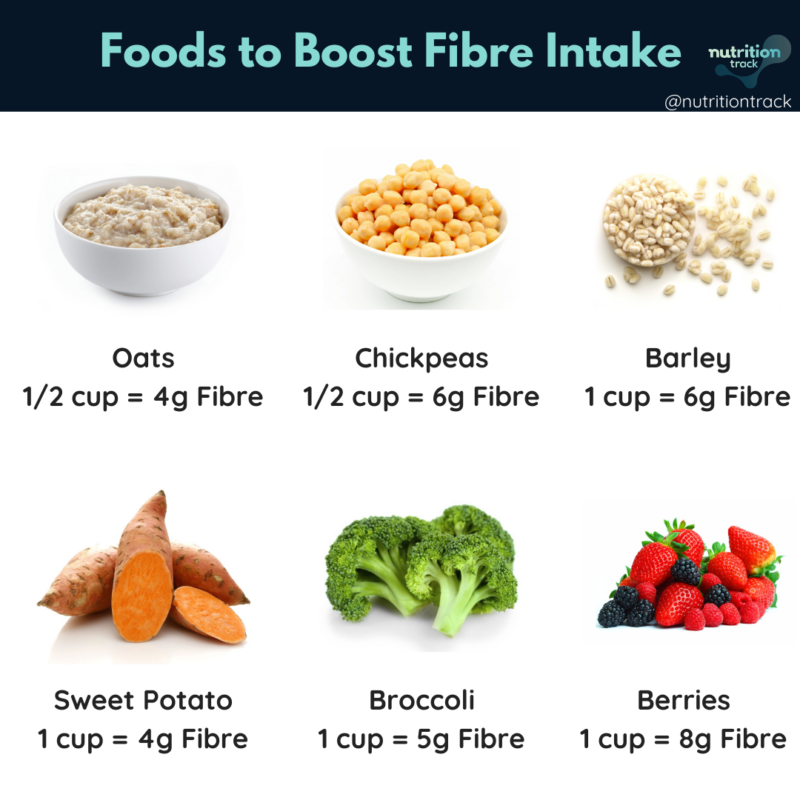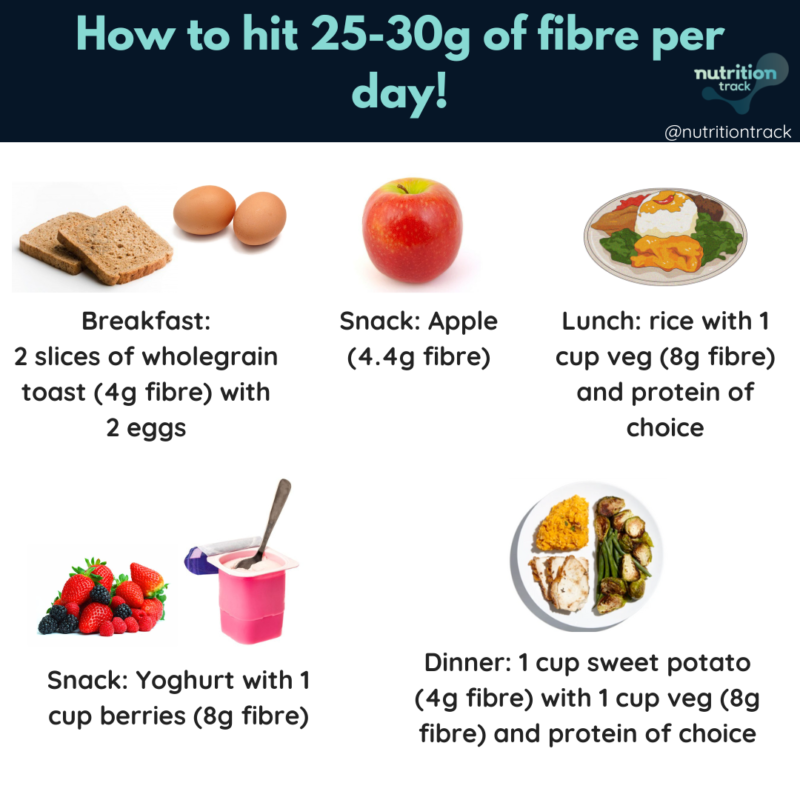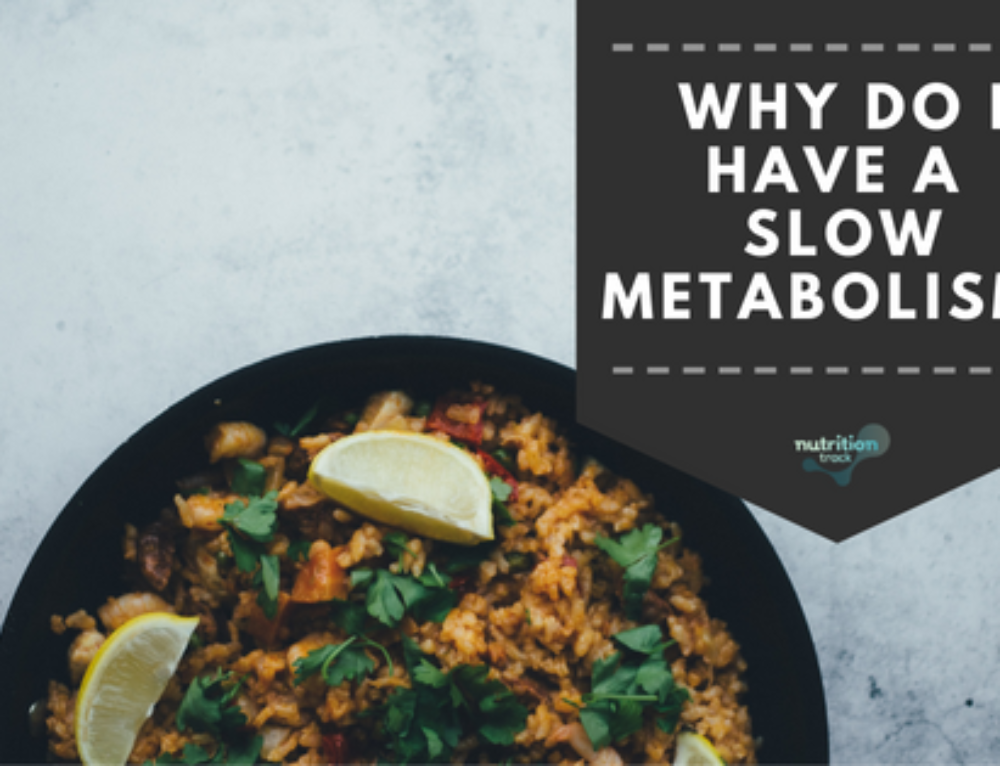If you haven’t heard – dietary fibre is a power house!

Research has shown that people with higher fibre intakes had lower risk of premature mortality compared to those with lower fibre intakes.
The benefits include:
- Improve every aspect of metabolic health (improve glycemic control, lower cholesterol etc)
- Manage constipation
- Help with satiety, and maintaining healthy weight
- Food for gut bacteria
Studies have also consistently shown that dietary fibres have microbial and regulatory effects on the gut that have important implications for gastrointestinal health.
They have effects on lipaemic and glycaemic responses, nutrient digestion and absorption, microbiota, cholesterol regulation and affecting gut transit.
A meta-analysis found that 25-29g of dietary fibre per day had the greatest risk reduction in type 2 diabetes, colorectal cancer, stroke, coronary heart disease, all cause mortality, and mortality from cancer and coronary heart disease.
When we think of fibre we normally think of veggies.
Yes they are one of the main sources but there are other foods that are good sources too – vegetables, fruits, wholegrains, nuts and seeds, legumes, herbs and spices!

How much to consume?
Guidelines recommend about 25-30g of fibre a day.
Here’s what it can look like:

The key is to aim for a WIDE VARIETY.
Why?
There are many different types of dietary fibres and their individual characteristics (such as fermentability, solubility abs viscosity) influence their overall function and effect.
Therefore, pragmatically, the BEST way to obtain all the benefits from fibre is to consume a wide variety of plant foods!
Think DIVERSITY!
Quick tip:
If you don’t normally consume fibre rich foods, increase SLOWLY and drink plenty of water! If you increase too quickly, you may feel a little gassy and bloated. This is because your gut bacteria produces gas when they process the fibre. The good news is that the gut is highly adaptable! It will adjust over time. GO SLOW!
#EATYOVEGGIES
References:
- Gill, S. K., Rossi, M., Bajka, B., & Whelan, K. (2021). Dietary fibre in gastrointestinal health and disease.Nature Reviews Gastroenterology & Hepatology,18(2), 101-116.
- Reynolds, A. N., Akerman, A. P., & Mann, J. (2020). Dietary fibre and whole grains in diabetes management: Systematic review and meta-analyses. PLoS medicine, 17(3), e1003053.








Very helpful tips Ms. Adele
You’re most welcome!